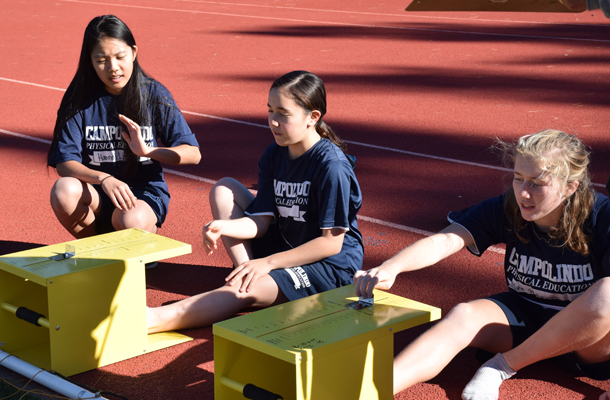PE Apparel Policy Needs Update
December 5, 2017
Leggings are a popular choice for active girls, providing range of movement and warmth. Various brands of the stretchy, insulating material are on display across the campus daily. However, these practical garments are currently unwelcome in physical education classes.
While the broader campus does not have any prohibition on leggings, the PE Department claims that they are not acceptable clothing for athletic activities.
Why?
For the same reason that wearing any “regular” school-day apparel is prohibited during physical education: It is supposedly an issue of hygiene, the thought being that students should not be wearing clothing during the school day they they have perspired in during their PE class.
Thus, in order to earn full participation credit during PE, a student must wear a school issued shirt and shorts, with no other garments underneath –other than underwear, one would hope.
When temperatures drop, the only options for students are school issued sweatshirts and sweatpants. These cheaply made items are inadequate for keeping students warm, and their bulky nature make them a detriment to most types of vigorous physical activity.
Allowing sweatpants, but not leggings, is also rather hypocritical given the reality that many students who wear sweatpants during PE continue wearing them throughout the remainder of their school day. In fact, this is also true of the school issued shorts, and even the shirts, during warmer weather.
The fact is, the dress policy for physical education is not working. It takes away a convenient, comfortable and popular apparel option, limits student performance, and does not deter students from supposedly unhygienic practices.
In an age when enthusiasm for physical education among teens seems to be in decline, there should be consideration for how the experience could be made more appealing. One way to do this might be to allow students a wider choice of athletic apparel options, including those trendy, form-fitting, leg-warming tights, that were, after all, first introduced to the world as yoga pants.
Losening the restrictions would also allow for a measure of creativity and self-expression that teens obviously crave, which again, goes a long way in making the physical education experience enjoyable.
While healthy hygiene is certainly important, the current policy does little to ensure students are actually being hygienic. A more effective way to keep teens healthy might be to get them engaged and enthusiastic about physical education by allowing them to wear what they deem to be fun, comfortable athletic gear. In other words, get students actually working hard, breathing hard, and perspiring and then we can worry about hygiene.


